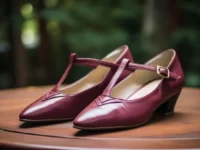Waxing at home can be a daunting task for beginners, and mistakes will be made. However, the benefits are enormous: savings on salon bills, absolute comfort and the possibility of having a smooth skin in just a few minutes. With a little practice and technique, you'll be a home waxing expert in no time. To help you along, here are the most common waxing mistakes (with their solutions!) that we see on a regular basis.
1 . Prepare your skin the wrong way for the wax you are using.
To wash or not to wash. It depends on the type of wax you use!
Wash your skin: If you use a sugar-based wax, wash your skin before waxing. Sugar wax is water soluble, and it does not like residual oils on the skin. Clean, dry skin will help the wax cling to the hair for optimal hair removal.
Don't wash your skin: If you are using a salon type resin wax, do not wash your skin before waxing. Resin-based waxes are oil soluble. You actually need the skin's natural oil layer to remain. This reduces discomfort because the wax adheres less to your skin, but it will still grab and remove hair without any problems. Don't worry too much if you've washed your skin, but in that case, it's highly recommended to use a little talc or soft powder to give that protective layer between the skin and the wax.
2 . Apply too thick a coat of wax.
This point concerns liquid waxes that are removed with strips of cloth (epilation). With these waxes, the key to good results is to apply a very thin layer of wax. Does this sound strange? Wouldn't more wax give better results? No. A thick layer of wax does not remove hair as well as a thin layer. This is a very common mistake, which causes some beginners to give up on these types of waxes altogether. Now repeat after me: "For liquid waxes removed with cloth strips, a thin layer of wax is the key".
The correct temperature, and therefore the correct viscosity, is required to apply a thin layer of wax. All liquid waxes must be heated with a microwave or a wax heater. If the wax is too cold, it will be thick and difficult to spread. If the wax is too hot, it will be too thin and may even burn you. The right consistency of wax is like liquid honey. Think Goldilocks, the perfect temperature is as important for wax as it is for porridge.
3 . Waxing when the hair length is too short.
The caller: "The wax didn't work".
Parissa Wax: "Tell me where you used the wax?
Interviewer: "My legs, I usually shave them. I used your sugar wax.
Parissa Wax: "When was the last time you shaved your legs?
Caller: "Just under a week ago.
The caller: "The wax didn't work".
Parissa Wax: "Tell me where you used the wax?
Interviewer: "My legs, I usually shave them. I used your sugar wax.
Parissa Wax: "When was the last time you shaved your legs?
Caller: "Just under a week ago.
This is a very common mistake! We strictly recommend the "two week rule". You really should wait at least two weeks before waxing, especially if you have previously shaved this area. The hair length should be about ¼ of an inch or 1 cm. This will allow the wax to cling to enough hair for the best results.
If you combine insufficient hair length with the use of an inappropriate type of wax (previously shaved legs require wax strips or hot wax), you may be disappointed with the waxing.
While it's tempting to wax right away when new hair appears, it's always best to wait at least two weeks before waxing again. This will ensure that the hair is long enough for effective removal and super smooth results.



